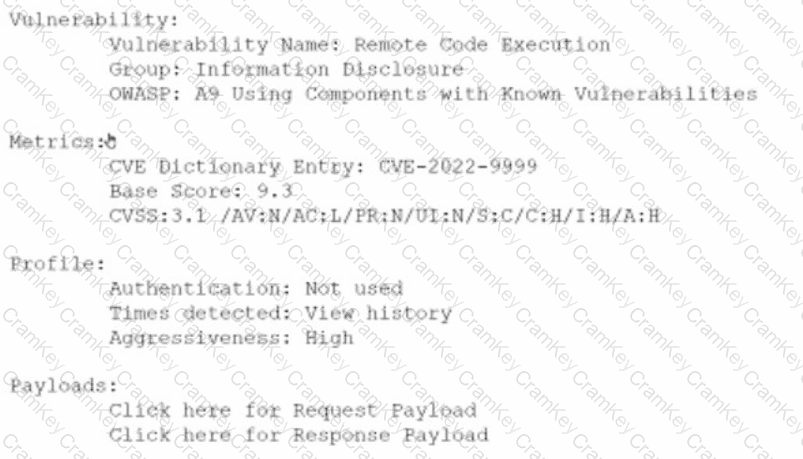The correct answer is B. Metrics.
The Metrics section of the vulnerability report provides information about the level of impact on data confidentiality if a successful exploitation occurs. The Metrics section contains the CVE dictionary entry and the CVSS base score of the vulnerability. CVE stands for Common Vulnerabilities and Exposures and it is a standardized system for identifying and naming vulnerabilities. CVSS stands for Common Vulnerability Scoring System and it is a standardized system for measuring and rating the severity of vulnerabilities.
The CVSS base score is a numerical value between 0 and 10 that reflects the intrinsic characteristics of a vulnerability, such as its exploitability, impact, and scope. The CVSS base score is composed of three metric groups: Base, Temporal, and Environmental. The Base metric group captures the characteristics of a vulnerability that are constant over time and across user environments. The Base metric group consists of six metrics: Attack Vector, Attack Complexity, Privileges Required, User Interaction, Scope, and Impact. The Impact metric measures the effect of a vulnerability on the confidentiality, integrity, and availability of the affected resources.
In this case, the CVSS base score of the vulnerability is 9.8, which indicates a critical severity level. The Impact metric of the CVSS base score is 6.0, which indicates a high impact on confidentiality, integrity, and availability. Therefore, the Metrics section provides information about the level of impact on data confidentiality if a successful exploitation occurs.
The other sections of the vulnerability report do not provide information about the level of impact on data confidentiality if a successful exploitation occurs. The Payloads section contains links to request and response payloads that demonstrate how the vulnerability can be exploited. The Payloads section can help an analyst to understand how the attack works, but it does not provide a quantitative measure of the impact. The Vulnerability section contains information about the type, group, and description of the vulnerability. The Vulnerability section can help an analyst to identify and classify the vulnerability, but it does not provide a numerical value of the impact. The Profile section contains information about the authentication, times viewed, and aggressiveness of the vulnerability. The Profile section can help an analyst to assess the risk and priority of the vulnerability, but it does not provide a specific measure of the impact on data confidentiality.
[References:, [1] CVE - Common Vulnerabilities and Exposures (CVE), [2] Common Vulnerability Scoring System SIG, [3] CVSS v3.1 Specification Document, [4] CVSS v3.1 User Guide, [5] How to Read a Vulnerability Report - Security Boulevard, , , , ]
